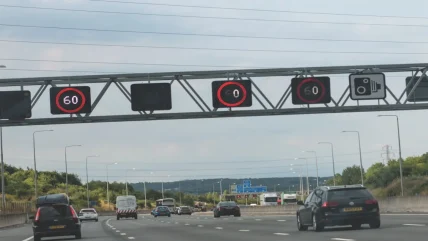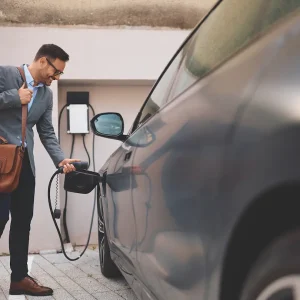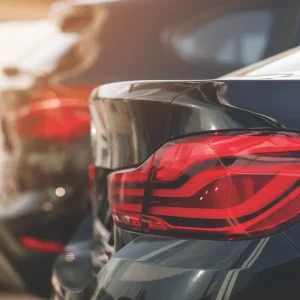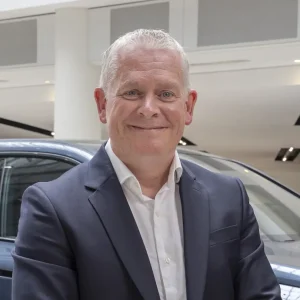
Pressure is mounting on the UK Government to tackle rising death rates on smart motorways, as official figures, inquests and calls for closure have underlined their poor safety record.
Despite the government’s claims that “ALR [all-lane running] motorways are as safe as, or safer than, conventional motorways, but not in every way”, ALR motorways have the highest fatality rate in relation to length of any type of road on the UK’s Strategic Road Network (motorways and some A-roads), according to calculations by Business Car based on official figures.
The government’s STATS19 data – published by the Department for Transport (DfT) and Highways England – shows that there were ten deaths on the UK’s 123 miles of ALR motorways in 2018. This is the most recent year for which official figures are available, which equates to 8.1% as a percentage of road length, higher than any other type of carriageway within the Strategic Road Network.
Conversely, dynamic hard shoulder motorways – those with variable speed limits where the hard shoulder selectively opens during heavy traffic – had the lowest fatality rate of 1.5%, with one death in 66.5 miles.
Of the other carriageways that make up the network, A-roads had the second-highest ratio of fatalities at 6.3%, with 165 deaths in 2,611 miles, controlled motorways – those with variable speed limits and a permanent hard shoulder – were third at 5.8%, with eight deaths in 137 miles, followed by conventional motorways at 4.3% with 67 deaths in 1,576 miles.
On 21 February 2021, The Times reported that the death toll on smart motorways had “surged to a new record” as DfT figures for 2019 – held back from general publication – showed that fatalities on motorways where hard shoulders operate as full or part-time lanes (ALRs and dynamic hard shoulders) rose by three to 14. The newspaper claimed the true number was 15, as the total did not include an individual who died in hospital seven weeks after a crash. The DfT refused to corroborate the alleged 2019 figures when asked by Business Car.
Further media reports in early March 2021 suggested that half of smart motorway safety cameras were not operational. Highways England told Business Car that the cameras were enforcing speed limits but confirmed the full network would not be able to issue penalties to drivers who continue to drive in ‘red X’ lanes marked as closed until the completion of an upgrade in July 2023.
In a statement, it said: “A rolling programme is underway to upgrade the remaining speed-only sites so they can also detect red X violations. The roll out has been slightly delayed due to Covid-19, as it has meant some systems could not be physically tested and upgraded cameras commissioned. Both of these are necessary before enforcement can begin.”
In January 2021, Yorkshire coroner David Urpeth called for a review of smart motorways after an inquest into two fatalities on the M1 found that they could have been avoided if there had been a hard shoulder. Jason Mercer and Alexandru Murgeanu died when Prezemyslaw Szuba crashed his lorry into their vehicles near Sheffield in June 2019, which led Urpeth to record a verdict of unlawful killing.
In February, fellow Yorkshire coroner, Nicola Mundy, said Highways England should be investigated on manslaughter charges after Nargis Begum was killed when her car broke down – also on a part of the M1 with no hard shoulder – in September 2018. Begum was outside her vehicle when another car collided with it, forcing it into her. Reports from previous hearings suggest there were 16 minutes between the breakdown and the collision and a further six minutes before warning signs were activated.
In a tweet on 24 January, South Yorkshire police and crime commissioner, Dr Alan Billings, announced that he had written to Highways England and the transport secretary, Grant Shapps, calling for the government to abandon smart motorways, describing them as “anything but ‘smart’.”
Dr Billings published Shapps’ response in which the minister reiterated the government’s belief in the safety of ALR motorways. He said he met with Highways England on 25 January “to discuss progress. I have asked for a report setting out progress in delivering the 18-point action plan and identifying actions that can be delivered early.” A cross-party government transport committee is also said to be investigating whether or not there are better alternatives to smart motorways.
Billings renewed his call for the government to “think again about this type of motorway” on 15 February, following “a further incident of a heavy goods vehicle colliding with a stationary car in a live running lane. One of the occupants of the car was airlifted to hospital with very serious injuries. I do not believe there is anyone who uses this stretch of the motorway, as I do, who does not feel anxious when driving along it.”
Highways England published an advice page called ‘How to drive on a smart motorway’ on Gov.co.uk on 27 April 2016. However, the page currently says, “this guidance was withdrawn on 9 December 2020. because it’s out of date”.
Government figures from 2018 suggest ALR and dynamic hard shoulder motorways totalled 189.5 miles, though recent reports suggest that smart motorways now total around 350 miles and include sections of the M25, M1 and M6.
“They do go on for quite a while,” said AFP co-chairman, Paul Hollick, “there aren’t too many points where you can just throw a vehicle on to what was effectively the hard shoulder, because it’s now the slow lane.”
He said he was “naturally uncomfortable with smart motorways,” and advised fleets and company car drivers to “be aware it’s not their fault that the car has broken down. Don’t feel the need to help everybody else out or worry about the fact that the car’s blocking the lane.
“Get up the bank of the hill and get away from the car. Make sure it’s got the hazards on and, ideally, put the [warning] triangle out in the right place. and contact the emergency services to come and deal with it as quickly as they can before, potentially, somebody hits it.”





